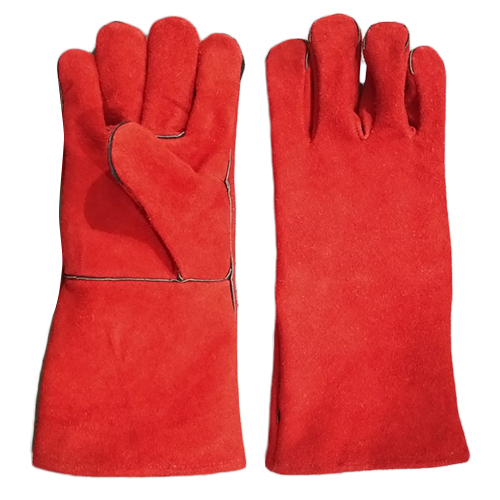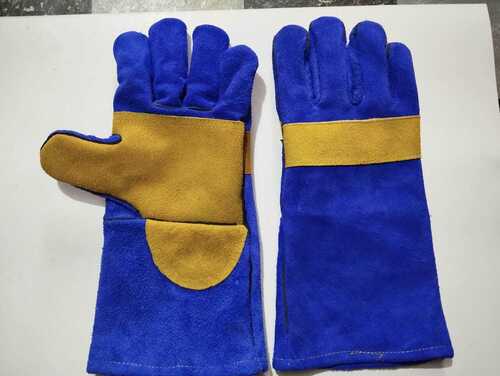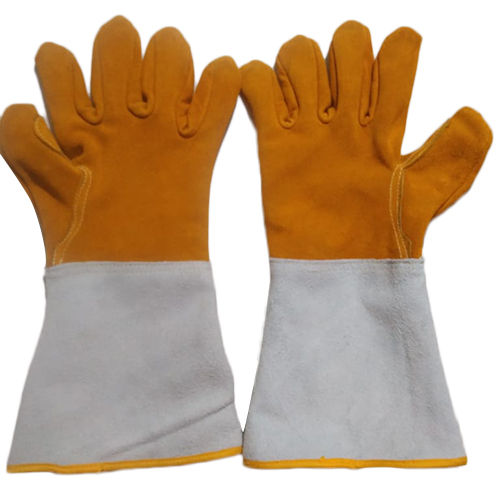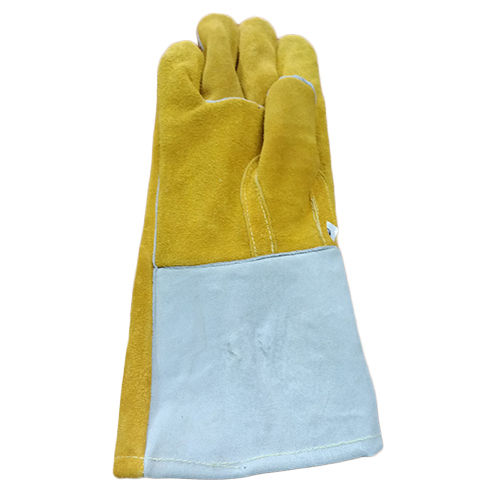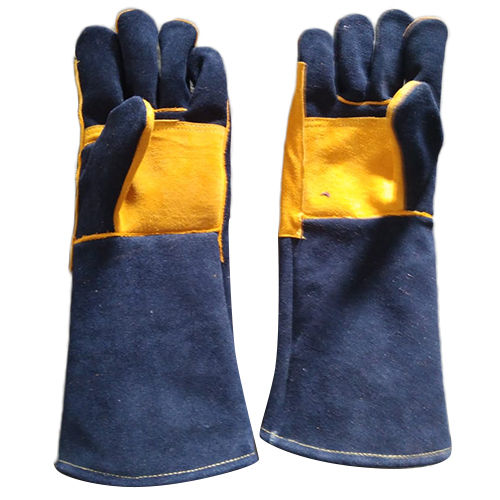Red Split Leather Welding Gloves
Product Details:
- Feature Washable
- Product Type Gloves
- Fabric Type Leather
- Pattern Printed
- Click to View more
Red Split Leather Welding Gloves Price And Quantity
- 100 Pair
- 120 INR/Pair
Red Split Leather Welding Gloves Product Specifications
- Printed
- Washable
- Leather
- Gloves
Red Split Leather Welding Gloves Trade Information
- Cash Advance (CA)
- 5000 Pair Per Month
- 10 Days
- All India
Product Description
Here are some major aspects and features of red split leather welding gloves:
1. Material: Cowhide or other forms of split leather are commonly used to make red split leather welding gloves. Split leather is made from the lower, more fibrous layers of the animal skin, which makes it thicker, more robust, and heat-resistant than top-grain leather.
2. Heat Resistance: These gloves are made to resist the high heat involved with welding activities. The thick split leather material resists heat well, shielding the wearer's hands from burns caused by hot metal, sparks, and slag.
3. Split leather is noted for its resilience, making it ideal for harsh and demanding industrial situations. Red split leather welding gloves are made to last and resist wear and tear, allowing them to handle the rigours of welding activities.
4. Welding gloves frequently have reinforced stitching for enhanced strength and durability. The stitching keeps the layers of leather together and keeps the gloves from unravelling or separating under prolonged use.
5. Cuff Length: Red split leather welding gloves usually have an extended cuff that protects the wearer's wrists and forearms. The lengthier cuff protects the skin from heat, sparks, and welding spatter that may extend beyond the hands.
6. Red split leather welding gloves are meant to provide a combination of protection and comfort, despite their robust construction. To create a comfortable fit and decrease sweat buildup, they are frequently lined with soft fabrics such as cotton or fleece. Some gloves may be more flexible and feature pre-curved fingertips to improve dexterity and grip.
7. Colour: While "red" is the most widely associated colour with split leather welding gloves, they are also available in grey or brown. The colour difference is solely for cosmetic purposes and has no bearing on the functionality or performance of the gloves.
It is critical to follow proper safety measures and standards when using red split leather welding gloves or other welding safety gear. These gloves are made to protect against heat and sparks, but they may not protect against additional hazards such as electrical shock or chemical exposure. As a result, it is critical to evaluate the individual risks connected with the welding task and select appropriate safety equipment accordingly.
FAQ
1. What kind of leather is used in this glove?
Ans - This glove is made of red split leather.
2. How long is the glove expected to last?
Ans - The longevity of this glove is determined by the type of welding and how it is used. These gloves typically last 6 to 12 months.
3. Is the glove resistant to fire?
Ans - Yes, this glove is composed of flame-resistant leather.
4. Can the gloves be reversed?
Ans - Yes, these gloves are reversible and may be worn on both hands.

Price:
- 50
- 100
- 200
- 250
- 500
- 1000+
Other Products in 'Welding Gloves' category
GST : 19ALFPB9197F1ZT
|
 |
SS LEATHER
All Rights Reserved.(Terms of Use) Developed and Managed by Infocom Network Private Limited. |

